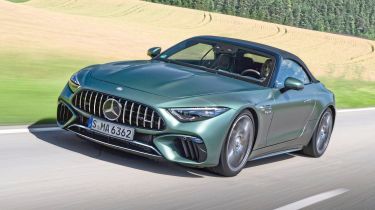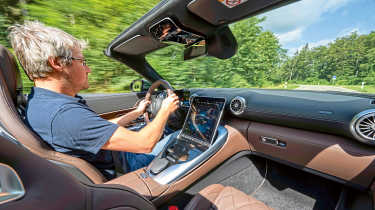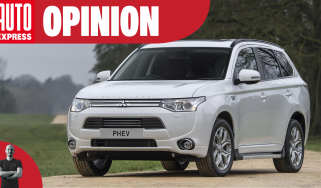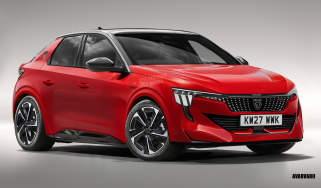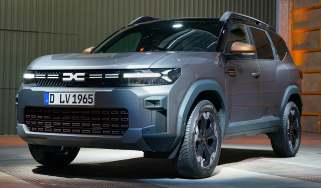New Mercedes-AMG SL 63 S E Performance review: plug-in GT is most powerful SL ever
Mercedes has done a remarkable job of fitting its plug-in hybrid powertrain into the SL, while retaining a pretty polished drive
Verdict
The Mercedes-AMG SL 63 S E Performance is hugely impressive in a straight line, and surprisingly adept in the corners – all seemingly in spite of the laws of physics at times. The shrunken boot along with the minuscule electric range are unavoidable negatives, and the price (almost £20k more than the standard SL 63) seems steep. Save yourself some cash and stick with one of the equally emotional non-PHEV models
If you glanced at the outside of this Mercedes-AMG SL 63 S E Performance you’d think not much has changed. But somehow the maker has managed to fit its plug-in hybrid technology from the big Mercedes-AMG GT 4-Door inside – marking the inception of the first-ever Mercedes-AMG SL PHEV.
The plug-in system helps make this SL 63 S E Performance the most powerful Mercedes SL to date, with a total output of 804bhp and a whopping 1,420Nm of torque. Mercedes-AMG’s widely-used M177 twin-turbocharged 4.0-litre V8 is responsible for 603bhp (up from the SL 63’s 577bhp) and 850Nm of that, with an electric motor mounted on the rear axle taking care of the rest.
The way Mercedes has integrated the battery and electric motor into the SL is as intricate as it is impressive, although the car’s credentials as a grand tourer are now in question given that the already tiny 213-litre boot has shrunk to a pitiful 110 litres. There’s a 6.1kWh battery sending power to the rear motor, but this power can also be sent to the front wheels via the SL’s all-wheel drive 4MATIC system. The tiny, and frankly quite pointless, eight-mile electric-only range confirms that the plug-in hybrid system was very much designed for performance rather than efficiency.
More reviews
Car group tests
In-depth reviews
Road tests
- New Mercedes-AMG SL 63 2023 review
- New Mercedes-AMG SL 43 2023 review
- New Mercedes-AMG SL 55 2023 review
Used car tests
Despite weighing-in at a substantial 2,195kg, the SL 63 S E Performance will match even the Mercedes-AMG One hypercar’s 0-62mph time of 2.9 seconds, before storming off to the same 196mph top speed as the non-PHEV Mercedes-AMG SL 63.
The straight-line speed is incredible, but the power delivery is slightly different to that of the standard car. The additional boost from low revs with the electric motor is useful, but overall the plug-in hybrid system is smoothly integrated.
We found the SL 63 – already rather portly at 2,048kg – to be surprisingly nimble, and it’s a similar story with the even heftier plug-in hybrid model. Perhaps as testament to the Michelin Pilot Sport 5 S tyres our car was fitted with, the SL 63 S E Performance conceals its weight very well indeed. The steering is sensitive to inputs and thanks to that additional motor on the back axle, the weight distribution is even better. As ever, the four-wheel drive system helps to provide ample grip.
We found the huge, standard-fit carbon ceramic brakes to be particularly impressive on the standard SL 63 and even with the extra mass, they more than up to the task of reining-in the plug-in hybrid’s momentum, while still providing consistent pedal feedback – not always a Mercedes strong point.
Helping even further to keep the SL’s kerb weight in check are the hydraulically cross-linked adaptive dampers that have a semi-active anti-roll function. Replacing traditional anti-roll bars, this system allows more adjustability for the suspension depending on the selected driving mode. Unlike older versions of the AMG SL, the S E Performance features coil springs rather than air-suspension. The 21-inch wheels are the same size as the SL 63’s and once again they contribute to a slightly fussy ride here, which does settle down better at high speeds.
Despite the expansive bonnet and being both longer and wider than a Porsche 911 Cabriolet, the SL doesn’t feel unwieldy on the road. It’s easy to place thanks to a near-perfect driving position and around town the rear-wheel steering system gives it an agile feel. The seats themselves offer a good balance between comfort and supportiveness, too.
The interior is largely the same as you’ll find in other versions of the latest SL – quality is definitely on the higher-end of the Mercedes spectrum even if space isn't, with rear seats that are only fit for extra luggage rather than passengers.
A feature we’ve long enjoyed on the new SL – and remains in place on this flagship variant – is the tilt function for the central screen to ensure it doesn’t reflect the sun’s rays into your face, and remains easy to see at all times. We don’t find Mercedes’ augmented reality display on that screen particularly useful, however, as it causes too much of a distraction whilst driving.
| Model: | Mercedes-AMG SL 63 S E Performance |
| Price: | £190,845 |
| Engine: | Twin-turbo 4.0-litre V8 + electric motor |
| Power/torque: | 804bhp/1,420Nm |
| Transmission: | Nine-speed dual-clutch, four-wheel drive |
| 0-62mph: | 2.9 seconds |
| Top speed: | 196mph |
| Economy/CO2: | 36mpg/175g/km |
| Dimensions: | 4,704/1,916/1,353mm |
| On sale: | Now |
